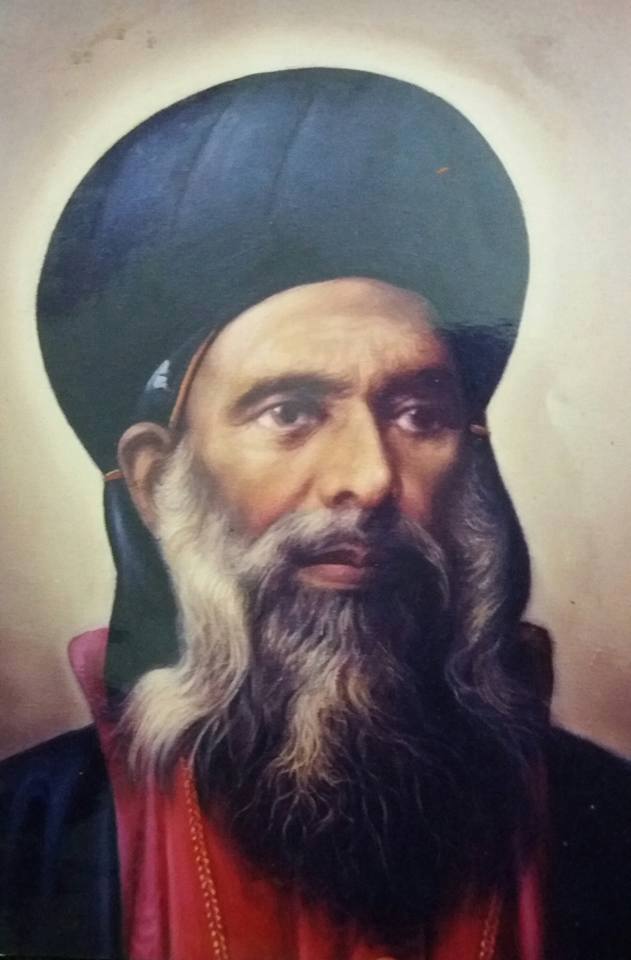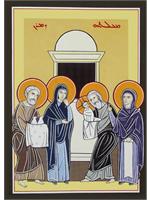The Feast of the Presentation of our Lord, is multi-layered because it is both a festival of the Church and an astronomical calendar date marking the half way point between winter solstice and vernal equinox: spring is on the way! It commemorates a scriptural event which combines the Presentation of the infant Jesus, a Christological feast; the Purification of the Virgin, a Mariological feast; and at the same it is the honoring of the temple, so it is a temple feast as well.
This feast, celebrated on February 2, is known in the Orthodox Church as The Presentation of Christ in the Temple (Mayaltho in Syriac). Another name for the feast is The Meeting of our Lord. Roman Catholic and Protestant Christians call the feast, The Purification of the Holy Virgin. About 450 AD in Jerusalem, people began the custom of holding lighted candles during the Divine Liturgy of this feast day. Therefore, some churches in the West refer to this day as Candlemas.
Forty days after Jesus Christ’s birth, Mary and Joseph, brought Christ to the Temple to make the customary offering for purification; a pair of turtledoves or two young pigeons. According to the Law of Moses (Leviticus. 12:2-8), a woman who gave birth to a child was forbidden to enter the Temple of God for forty days. There, the prophetess Anna and the aged Simeon met them. Simeon sensed the fulfillment of Isaiah’s puzzling prophecies of a virginal birth (Isaiah 7:14), and received God Incarnate just as he was promised he would before his death. Then Simeon praised God singing a hymn now called the Nunc Dimittis: “Now let Your servant depart in peace, O Master” (Luke 2: 29-32). Also, in the Temple was Anna the Prophetess. She had been a widow for many years. Anna was about eighty-four years old and spent her time in the Temple worshiping, fasting, and praying. When she saw the Christ Child she praised God and spoke of him to all who were awaiting the Messiah. After Jesus was presented in the Temple, the family returned to Galilee to the town of Nazareth. The Bible tells us that Jesus grew and became strong, and was filled with wisdom. (Luke 2:22-40)
Egeria, writing around AD 380, attests to a feast of the Presentation in the Jerusalem Church. It was kept on February 14th. The day was kept by a procession to the Constantinian basilica of the Resurrection, with a homily on Luke 2:22-39. However, the feast had no proper name at this point; it was simply called the 40th day after Epiphany. This shows that the Jerusalem church celebrated Jesus’ birth on the Epiphany Feast (as is common in some Orthodox Churches today). In regions where Christ’s birth was celebrated on December 25th, the feast began to be celebrated on February 2nd, where it is kept in the West today. In 542, the Emperor Justinian introduced the feast to the entire Eastern Roman empire in thanksgiving for the end to a great pestilence afflicting the city of Constantinople. Perhaps this is when Pope Gregory I brought the feast to Rome. The Feast of the Meeting of the Lord is among the most ancient feasts of the Christian Church. We have sermons on the Feast by the holy bishops Cyril of Jerusalem, Gregory the Theologian, Gregory of Nyssa, and John Chrysostom.
When Mary ritually presented her newborn Son in the Temple in Jerusalem, she did so in accordance with the Mosaic Law. The law provided that a woman should bring as a sacrifice a lamb and a dove. It was because Mary could not afford to bring a lamb, that she brought a pair of doves. The law also required that a first-born son should be redeemed with 5 shekels of silver, but there is no question of silver being paid in Mary’s case. Aside from the turtledoves, there was no real cost to this symbolic act of obedience and charity.
The key theme in the prayers and hymns of the feast is “datu sabro shariro, damsakyon leh beryotho dat?adeth lghenseh dodom: d?ableh bisho ba?someh” which translates “You are the true hope sought by the world: to renew Adam’s race that was corrupted by the Devil’s treachery.” The Scripture readings tell of the changing from the Old Testament to the New Testament, the old law becomes something new. The Son of God, giver of the law, now himself fulfills the law, being carried in Simeon’s arms as a human child.
This Feast presents the One on whom we focus, Jesus Christ, as the Redeemer of our race, the Hope of Salvation and the Light of the World, the light which no darkness can quench. God is the source and root of light and Jesus is the projection of this light to the world, even to the darkest and blackest of crevices within it. There is no-where that the light of God cannot reach. That is what this whole Church season is about: we who were once far off and distant from God were made close, by the revelation of the Light of the world to all people
Jesus Christ came to bring life, and life to the full - for everyone. That was, and remains, His mission, and it is ours, too. Whatever is not life-giving needs to be challenged, measured against the love, truth, courage, and goodness of the Gospel. In other words, the good news is meant to enter into all aspects of society. The message of Jesus Christ is that where God reigns it is not good enough just to love our family and friends, or even those of our own nation, race or religion. The reign of God is about breaking down all barriers that stand between one person and another, all which divides between “us” and “them,” to bring all human beings into good and life giving relationship with God and with one another. Christ’s redemptive work, while essentially concerned with the salvation of men, includes also the renewal of the whole temporal order. Hence the mission of the Church is not only to bring the message and grace of Christ to men but also to penetrate and perfect the temporal order with the spirit of the Gospel.
What can we present to the Temple of Christ, the Church today? In what condition do we present our souls to Christ? Have we thanked God for all that we have received? What has changed in our way of life since the Birth of Christ forty days ago? What progress has been made? The more we focus on Christ, the easier our journey becomes, that in no way means Christian life is an easy life. The closer we get to Him, the larger and more vibrant our life becomes, the distance becomes less and the connection between us and our goal becomes more apparent.
The true light has come, the light that enlightens every man who is born into this world. Let all of us, be enlightened and made radiant by this light. Rejoicing with Simeon, let us sing a hymn of thanksgiving to God and say: “dbo’eno shrin bashlomo dho ?zay ’aynay la?nonokh: wal furqonokh qadisho - Let me depart in peace, for my eyes have seen Your compassion and Your holy Salvation.”
REFERENCES

